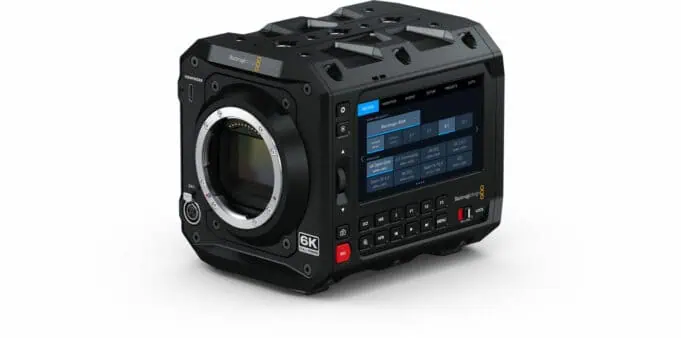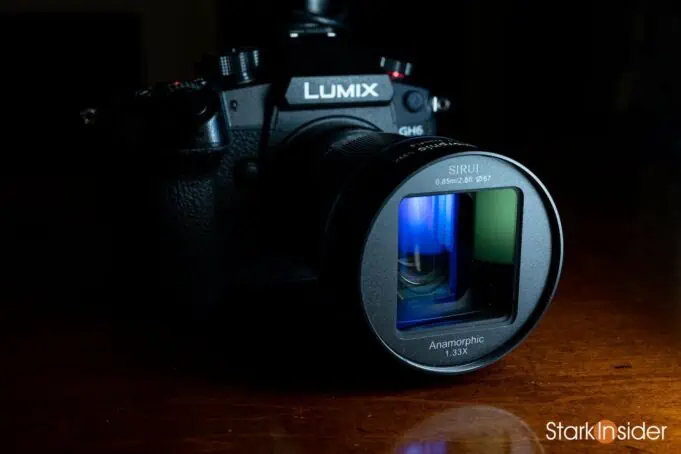Everyone these days wants a box camera. The reason is simple. You can rig them up however you like. For some projects that might mean all sorts of audio gear, secondary monitors and various mounts. For others I could mean stripping it right down to the bare minimal to fly on a gimbal. Flexibility is one of the calling cards of the “box camera.”
Last month, Blackmagic answered the call with its new PYXIS. Essentially a re-packaged version of the Blackmagic Cinema Camera 6K (and using same full frame sensor), the camera is a cute little thing that weighs merely 3.3 pounds, yet packs quite a punch with its built-in monitor, 12G-SDI ports, anamorphic shooting, and dual-native ISO. Pretty nice for under $3,000K USD.
Now, it seems Panasonic too will join in, pursuing this emerging budget cinema camera category.
Apparently, the iconic Japanese camera manufacturer has been issued a patent for a “box-style camera with a handgrip” in the last quarter of 2023. (JP2018148545A)

According to reports there’s a rear touchscreen and the handgrip can accommodate a battery for power. In addition, according to the Newsshooter article on the patent, the grip will also include a shutter button, a dial, and a function button.
One of the figures filed as part of the patent show a small USB-C drive atop of the camera attached by a cable to the body — similar to what we’ve seen Blackmagic offer for several years now. It’s a popular way to record lots of video footage at a reasonably affordable cost, compared to using pricier internal memory cards.
A Boxy GH6? (or S5)

My guess is that Panasonic puts most of the tech you can find in today’s GH6 into this possible upcoming model.
That would mean up to 5.7K, anamorphic shooting, and a bevy of shooting modes and resolutions including the ever popular 4K/120.
The internet will be all up in arms, however, if it doesn’t include internal ND filters and IBIS (in-body image stabilization), features typically desired by solo operators and productions with very small crews. Traditional cinema cameras typically eschew those features in favor of allowing filmmakers to rig the system as needed by any particular production — and that would include sophisticated ways of moving the camera in addition to large matt boxes for filters and so forth.
And what about the sensor?
The GH6, like its predecessors in the GH5 and GH4 and other sin the Lumix line, features a micro four thirds sensor. One that has sort of fallen out of favor in recent years, as many have opted to go full-frame. I don’t really understand that trend. Yes, a full-frame sensor is suitable for many projects. But Super 35 has been the hallmark of cinematography for decades and certainly hasn’t hampered iconic directors in achieving beautiful results.
Leaked Press Release?
The Panasonic Lumix CineBox is a sleek and compact box camera designed specifically for cinema productions, catering to filmmakers on a budget without compromising on quality. Its minimalist design is lightweight and portable, perfect for shooting in diverse locations.
The camera body is constructed from durable yet lightweight carbon fiber, ensuring both durability and portability. Its compact size allows for easy maneuverability, whether mounted on a tripod or handheld.
Equipped with a Micro Four Thirds sensor, the Lumix CineBox delivers stunning 4K resolution footage with exceptional clarity and dynamic range. This sensor size strikes a balance between image quality and affordability, making it ideal for independent filmmakers and small-scale productions.
The camera features a versatile lens mount compatible with a wide range of Micro Four Thirds lenses, offering filmmakers flexibility in their creative vision. Additionally, built-in image stabilization technology helps to ensure smooth and steady footage, even in challenging shooting conditions.
For filmmakers focused on capturing high-quality audio, the Lumix CineBox is equipped with dual XLR inputs, allowing for professional-grade audio recording. This feature is invaluable for capturing clear and immersive soundscapes to complement the visual storytelling.
In terms of usability, the camera boasts an intuitive interface with customizable function buttons and easy-to-navigate menus. A tilting LCD touchscreen provides convenient access to camera settings and monitoring during shooting.
Connectivity options abound with built-in Wi-Fi and Bluetooth, enabling seamless wireless control and file transfer to compatible devices. Filmmakers can also remotely monitor and control the camera using the dedicated Lumix smartphone app, offering greater flexibility on set.
Despite its affordability, the Panasonic Lumix CineBox does not skimp on features or performance, making it the dream camera for filmmakers looking to maximize their creative potential without breaking the bank.
(or maybe just ChatGPT?)
In any case, Panasonic could very well go the popular full-frame route like its peers, and perhaps borrow sensor tech from its own Lumix S5 line-up.
I’d expect the price for this mysterious Panasonic box camera also to match the competition, which should mean a price point somewhere in the $3,000-$4,000 USD range. Just a guess. But not exactly wild given all the information we know about similar products from Blackmagic, Sony, and Canon.
CineBox? I kind of like it.

